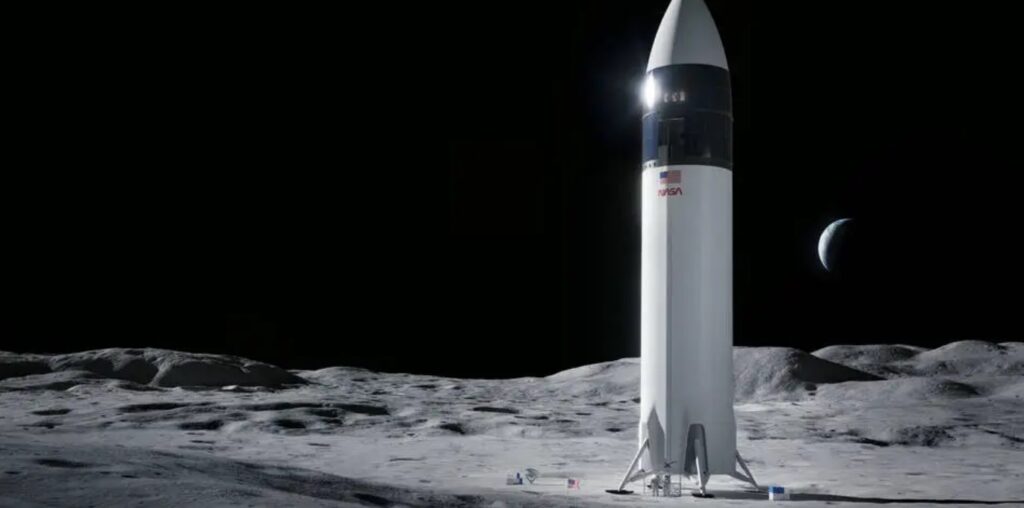
SpaceX
After more than half a century, NASA is planning to return to the Moon with Artemis III. This first crewed landing of the Artemis program will see astronauts exploring the lunar south pole region. As a prelude, this week NASA announced the selection of nine potential candidate landing sites for this mission.
Those sites will be further evaluated fr multiple considerations: “Each of the regions contains sites that will be narrowed down based on the combination of illumination, terrain, science and mission availability,” says Artemis Surface Planning Lead Tamra George (NASA). While NASA wants the most scientific value out of this landing, to be assessed by the Artemis III geology team, the site will also need line-of-sight communication with Earth and the correct shadow angle and lighting conditions during approach.
Apollo missions took these aspects into consideration as well, landing near local lunar sunrise when potentially dangerous pits and boulders stood out in sharp contrast. But the science goals of the Apollo and Artemis missions differ.
“The Moon’s south pole is a completely different environment than where we landed during Apollo missions,” says Sarah Noble (NASA). “It offers access to some of the Moon’s oldest terrain, as well as cold, shadowed regions that may contain water and other compounds. Any of these landing regions will enable us to do amazing science and make new discoveries.”

NASA / LRO
The nine sites surrounding the lunar South Pole region are:
- A peak near Cabeus B crater
- Haworth crater
- Malapert Massif
- Mons Mouton Plateau
- Mons Mouton
- Nobile Rims 1 and 2
- de Gerlache Rim 2
- Slater Plain
Some of these sites may sound familiar. In 2009 NASA’s Lunar Crater Observation and Sensing Satellite (LCROSS) impacted the Moon near Cabeus Crater. Intuitive Machines’ Odysseus lander came to rest on its side at Malapert A crater, not far from Malapert Massif. Finally, NASA’s now-canceled VIPER rover was to land near Mons Mouton.
The new sites were narrowed down from 13 candidate landing sites announced in 2022. They are all at the south lunar pole, where permanently shadowed regions could harbor water ice, potentially supporting long-term stays on the Moon.
To land near the south pole, Artemis III will first need to achieve a near-rectilinear halo orbit around the Moon. All six Apollo missions landed at lower latitudes on the nearside of the Moon, so approaching the south pole is new territory, both literally and figuratively. The CAPSTONE mission, launched in 2022, served a proof of concept for achieving this trajectory.
Artemis III follows on the first two missions of the initiative: Artemis I, which launched in November 2022, acted as the first launch of NASA’s massive Space Launch System (SLS) rocket, carrying the Orion capsule. That mission deployed 10 smallsats as well. Artemis II, currently set for September 2026 (but see below), will carry crew, announced in 2023, around the Moon. It represents the first crewed mission for SLS and of the Artemis project.

NASA
Stated milestones for Artemis III are to land the first woman, first person of color, and the first partner nation (non-U.S.) person on the Moon. The mission is expected to last 30 days.
Right now, the timeline shows the landing of Artemis III as set for September 2026, but that’s probably overly optimistic. First, Artemis II needs to lift off, and while current plans call for launch in September 2025, issues with the Orion command module’s heat shield could cause delays.

NASA / Artemis / Kent Chojnacki
Even if Artemis II goes off without a hitch, Artemis III adds a new component: Even though the crew will launch on the SLS and in the Orion capsule, it’s SpaceX’s Starship Human Landing System (launched separately on a Starship rocket) that will carry the crew of the third Artemis mission to the lunar surface. Plans call for the HLS to rendezvous with Orion in lunar orbit. The landing system will be capable of carrying 100 tons, far more than the Apollo lunar module’s maximum of five tons.
But the Starship HLS still needs to achieve the rating necessary to carry crew. SpaceX completed the first successful test of the Starship rocket from their Boca Chica launch facility in Texas back in March. (Two previous test flights were unable to achieve orbit.) The HLS has yet to be tested; that could happen in 2025.
Certainly, there remain many milestones to be achieved. Not to mention, Artemis will have to navigate another upcoming change of presidential administrations in 2025. Still, the goals are now in sight as humans prepare to return to the Moon.

